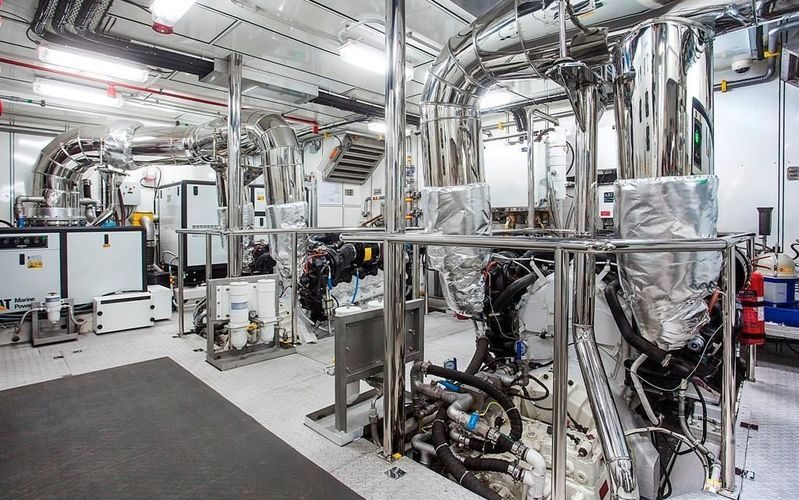Superyacht Crew: Sustainability and STCW for Engineers
Chief Engineer and current MLA College Sustainable Maritime Operations student Mick Walsh discusses his thoughts on STCW engineering training standards, both for Superyacht and commercial sectors. Does the established mandatory training help or hinder the industry’s ability to produce quality engineering officers with the knowledge and experience to keep pace with the development of alternative sustainable technology? And what could be the solution?

I have just completed the first module of my MSc in Sustainable Maritime Operations, submitting my last assignment yesterday. I have a brief reprieve from the late nights of sifting through small mountains of reference material to make a single valuable sentence, from deleting and rewriting entire bodies of work when my arguments have become muddled, and from the bittersweet feeling of realising a once-central viewpoint has become irrelevant and must be sacrificed to make the word count.
I have been reflecting on what I have learned and discovered and this morning my mind turned to a subject that has long irritated me – something that will become increasingly relevant as alternative technologies are adopted to make shipping more sustainable.
The threshold of competency for Engineering Officers is set not by quality and variety of experience but by the propulsion power of the ship. 3000kW is the somewhat arbitrary tipping point beyond which a single, crucial word begins to appear in an engineer’s Certificate of Competency – Unlimited. This may seem obvious to some – greater engine power correlates to larger, more complex ships and therefore a wider understanding of seagoing engineering systems. Or does it?
Eleven years ago, I was working on a small cruise ship. Built in the 1980s and carrying 250 passengers and crew, the 5,300GT MSY Wind Spirit has crisscrossed oceans with a propulsive power of just 1750kW. The difference here is that Wind Spirit is sail-assisted – importantly this is not included in the calculations of propulsion power.
My first trip to sea as an engineering cadet was in 2005. In the intervening 17 years, my reflection is that I owe little of my “competence” to my experience with main engines and propulsion systems. My competence is derived more from the richness and variety of my experience operating and troubleshooting all sorts of auxiliary systems from fuel and boiler water chemistry to hydraulics, from PLCs to HVAC, and everything else in between. My experience with 200hp outboards is as valuable to me as my experience with 20,000hp slow-speed diesel. Much of the most important periods of my professional growth have been on vessels of less than 10,000kW total power.
The IMO has set an ambitious decarbonisation goal, aiming for a 50% total reduction in greenhouse gas emissions by 2050. We are going to see more vessels with hybrid propulsion being constructed – the use of sail power on Wind Spirit and her sister ships was a novelty in the 1980s but it is looking increasingly likely that many of tomorrow’s ships will incorporate some sort of wind-assisted propulsion, whether in the form of sails, Flettner rotors or kites. New transitional fuels are also becoming more common, as are better operational practices.
Does STCW adequately prepare engineering officers for these technological challenges? In my opinion, no. It’s still too rooted in 1970s thinking. If the IMO is serious about meeting its targets, then the time is right to amend STCW to give focus to sustainable, environmentally sound engineering technologies and practices.
Besides the arbitrary kW requirement, STCW also focuses on another variable – sea-time. It’s a controversial topic in the superyacht industry, where many vessels spend little time at sea. This compounds the focus on the propulsion system as the key to competency – the literal interpretation of how the rules are applied is that an engineer’s competency grows only with the main engine running hours. After ten years in the superyacht industry, I wholeheartedly refute this notion! My belief is that any overhaul of STCW should focus more on the qualities that make a person competent rather than the environment in which they learn.
How much better would STCW serve both engineers and the maritime industry if the richness of experience was valued more highly than sea-time and if knowledge was prized above horsepower? How much better would it serve the wider goals of decarbonisation and sustainability if attitudes towards training were progressive instead of entrenched? And how could this be achieved?
When I was a cadet in 2005, I carried a Training Record Book; page after page of training matrices where my experience and exposure to various tasks and equipment could be recorded and signed off by a senior officer. Almost two decades later, I record my own Continuous Professional Development with the IMarEST and IEI in much the same way. With appropriate oversight, could such a system not also work across STCW?
Seagoing Engineering Officers have a significant part to play in the ongoing development of the maritime industry, and STCW is at risk of becoming the sick man of the IMO pillars if it fails to stay relevant. Perhaps this article will prompt you to think about your own training
and experience and I would be delighted to hear more opinions on the subject.
If the themes explored in this article and the pursuit of your education beyond your current qualifications are of interest to you, MLA College has developed an opportunity for superyacht crew to access a final year BSc and MSc In Sustainable Maritime Operations. Delivered by online distance learning and designed to be completely flexible around your working routines. You can also use your OOW/Master or Engineering Officer CoC’s to gain direct entry.
THE OM deal with all applications from Superyacht crew, please get in touch to explore your options for May, September or January entry.
For more from Superyacht Content, click here









.gif)











